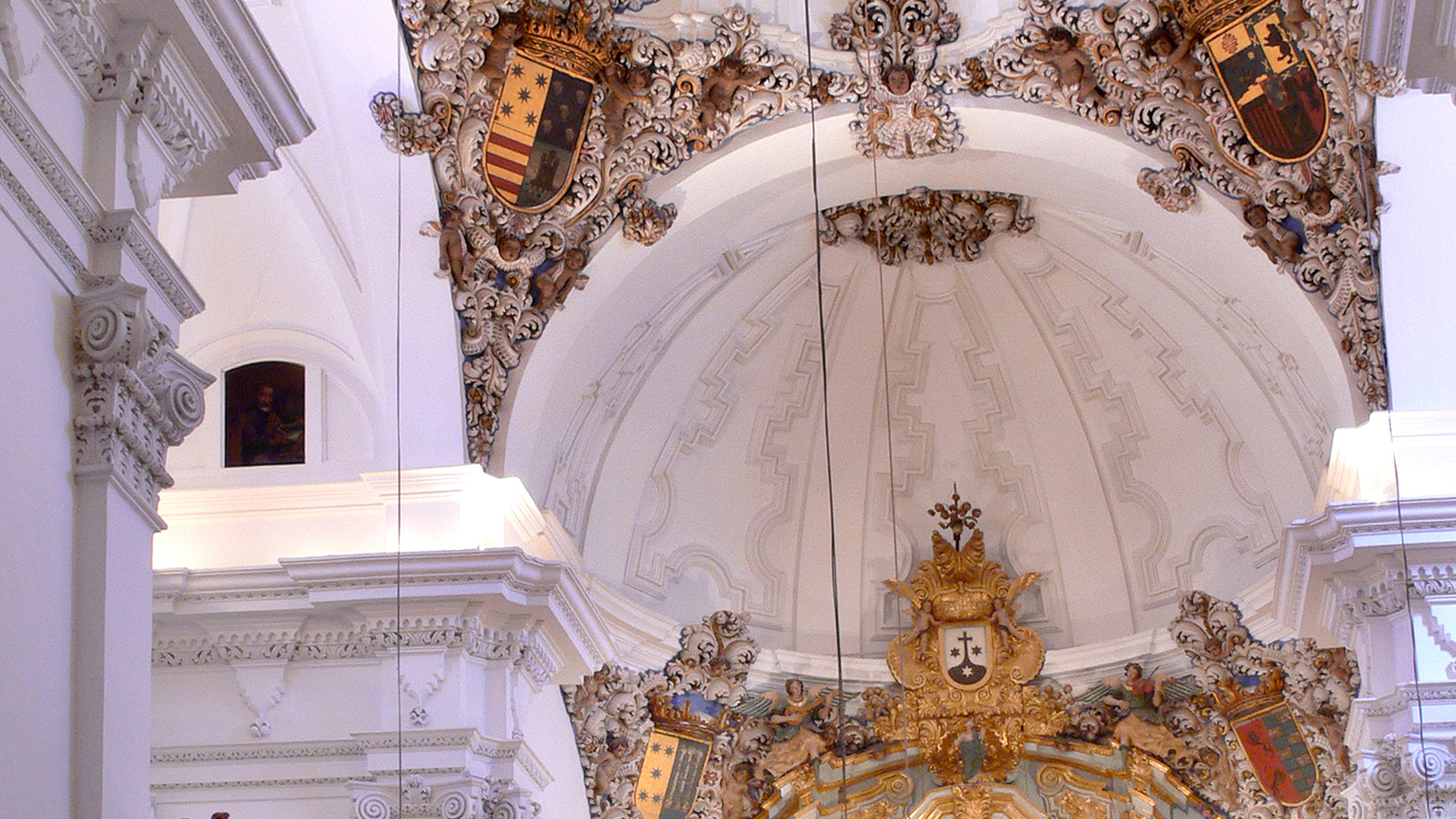Discover the Convent of San José.
It was founded by the Barefoot Carmelite Order of St Teresa in the year 1632, although the present church was constructed between the years 1707 and 1734. The San José Church has a single nave Latin cross floor plan with shallow cross arms. The decoration is baroque with plasterwork and a wealth of ornamentation. Its main altarpiece, attributed to Francisco Primo is presided over by a sculpture of San José, a work of the 17th Century, with a headpiece by Andres de Carvajal from the following century.
The remaining altarpieces which decorate the church must be of the same era. The sculptures of the transept , those of St Teresa, of the 18th Century, that of St John of the Cross, of the 20th Century, both Doctors of the Church, are very interesting. On an altarpiece in rococo style, we find a pretty image of the Dormition of the Virgin. In the sculpture section we can also highlight the lamp-bearing angels of the presbytery, probably a work of Miguel Marquez.

The paintings which adorn this interior are of special interest and we can point out a magnificent work by Pedro Atanasio Bocanegra: The Virgin and Child with St Michael, St Gabriel, St Ildelfonsus and St Catherine; opposite to this is another painting of St Joseph and Child and little St John, signed by the previous mentioned artist. Other important canvases relate to architectural perspectives.
Both the church and the museum are valuable jewels of religious baroque, architecture, sculpture and painting.
The museum, which was opened in 1999, preserves and exhibits one of the most beautiful artistic treasures of the city of Antequera. Its permanent collection comprises an important number of artistic items of great quality which, over the centuries the Carmelite community has conserved and now has on display for visitors to enjoy. Several exhibition rooms show pieces of sacred art, paintings, sculptures and goldwork.
Contact:
Address: Plaza de las Descalzas, Antequera, Málaga
Phone: 952 84 19 77
